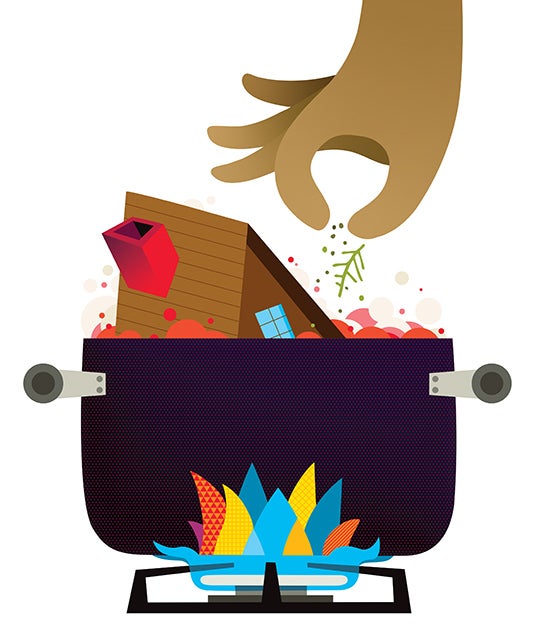The Explainer: Gas Stove Safety
We asked Daniel Cohan to explain what’s behind the heated debate over the safety of gas stoves.

Spring 2023
By Daniel Cohan
Gas stoves emit only a tiny share of the greenhouse gases that warm the climate, but they have long assumed a heated role in climate politics. The debate reignited in January, when a member of the U.S. Consumer Product Safety Commission told Bloomberg News that the agency planned to consider regulating gas stoves due to concerns about their health effects.
Politicians reacted with overheated outrage, putting gas stove ownership on a par with the right to bear arms and religious freedom. CPSC Chair Alexander Hoehn-Saric tried to douse the uproar, stating that he was “not looking to ban gas stoves” and that his agency “has no proceeding to do so.”
Gas stoves are a leading indoor source of nitrogen dioxide, or NO₂, which can cause or worsen respiratory illnesses in people who are exposed to it. Scientific studies show that living in a home with a gas stove increases children’s risk of asthma by nearly one-third, and some experts say health risks from gas stoves could be comparable to living with a smoker.
But the skirmish reveals important contours of the battlefield on which climate politics are waged. Gas stoves matter to the climate and to the gas industry because they serve as gateway appliances to the dominant residential uses of natural gas: heating and hot water.
The significance of gas stoves for the climate becomes clearer in the context of the Biden administration’s goal of achieving net-zero U.S. greenhouse gas emissions by 2050. This target can only be achieved by curbing fossil fuel use across the economy, including in homes.
Scientific studies show that living in a home with a gas stove increases children’s risk of asthma by nearly one-third, and some experts say health risks from gas stoves could be comparable to living with a smoker.
If new homes are built fully electric from the start, they avoid the cost of installing natural gas hookups and emit far less air pollution and fewer greenhouse gases throughout the homes’ lifetime. New York City and more than 50 California towns, cities and counties have already banned gas hookups in new buildings.
Elsewhere, however, 20 states have barred the enactment of natural gas bans, and gas stoves are a big reason why. “Cooking is the hill that the gas industry wants to fight on,” Bruce Nilles of Climate Imperative told me in a 2020 interview that foreshadowed the current skirmish. The American Gas Association has promoted the notion that gas stoves make skilled cooks since the 1930s, when it introduced the advertising slogan “Now you’re cooking with gas.” An AGA executive planted the phrase with writers for comedian Bob Hope. Soon it was picked up by comedian Jack Benny and even by Daffy Duck.
Today, however, many chefs, consumers and experts say gas is no longer the obvious choice. Magnetic induction cooktops, which cook using electricity to generate a magnetic field, heat faster, control temperatures more precisely and use less energy than other stoves. Homes built today will endure far beyond Biden’s 2050 net-zero target. And the longer the gas-is-better myth persists, the harder it will be to fully electrify new homes from the start.
Daniel Cohan is an associate professor in the Department of Civil and Environmental Engineering and most recently the author of “Confronting Climate Gridlock: How Diplomacy, Technology, and Policy Can Unlock a Clean Energy Future.” This article is republished from The Conversation under a Creative Commons license.
